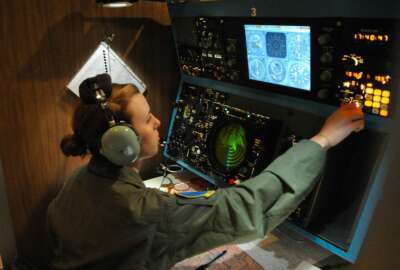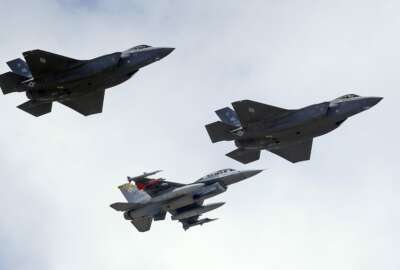
Air Force strengthens its innovation portfolio with AFWERX 3.0
AFWERX relaunched itself as a 3.0 version with plans to expand its mission.
With more people, more ideas and more money, the Air Force expects AFWERX 3.0 to go beyond its earlier incarnations and lead the crowded field of defense acquisition organizations seeking innovation.
AFWERX, the innovation arm of the Air Force based at the Air Force Research Laboratory (AFRL), introduced 3.0 at the end of November with five new initiatives. It plans to increase funding opportunities that align with operational goals and create a nexus of AFWERX’s different capabilities to better align with industry and research by increasing the speed and efficiency of getting ideas to production. It will expand the programs already in place, work with classified programs and improve the ability to use feedback towards process improvement.
“We’re going to do this by growing the team, we’re going to organize it properly, we’re going to bring in the tools and turn it into a directorate under the Air Force Research Laboratory,” said Col. Elliott Leigh, director of AFWERX, at a Dec. 14 online rollout of the 3.0 program.
As part of their efforts toward expansion, AFWERX grew its contracting team by 80% and its civilian workforce by 50%. The contracting focus remains on working with small business.
In conjunction with the AFRL, AFWERX uses the Small Business Innovation Research (SBIR) Open Topic program. A single solicitation provides an open call for solutions and allows businesses the flexibility to present ideas that were not specifically asked for.
AFWERX plans expansion of its three-phase funding program to get new projects from the idea stage straight through to manufacturing.
Phase one of the program awards up to $75,000 and only lasts for three months as a feasibility study. At the end of that period, the project can move to phase two, which is the prototyping period. It has a maximum award of $1.25 million and can last up to 21 months with a goal of working with a specific Air Force customer and demonstrating technical merit.
The final phase would be continuing or extending the original programs in partnership with government customers and getting funded outside the SBIR program.
“It’s also important to note that 3.0 will have a deliberate focus on fielding capability,” said Andrew Hunter, the assistant secretary of the Air Force for acquisition, technology and logistics. “We’ll apply additional effort to not only creating research and development funding opportunities, but also linking them to the procurement funding necessary to turn these projects into delivered capability at scale.”
Hunter said that since AFWERX 2.0 launched in 2020, 70% of the companies funded through AFVentures, AFWERX’s investment vehicle, were new to working with the Air Force.
Col. Nathan Diller, the previous director of AFWERX, said his team worked with over 2,200 companies and took more than 26 companies into partnerships.
“They started as small businesses and are now those large $1 billion endeavors,” Diller said.
In 2021, the Space Force joined the program as an affiliate called SpaceWERX. It pursues its own programs with a budget that has grown from $30 million to nearly $300 million.
One of the major ways the 3.0 program generates new ideas is through its challenges and spark cells. Some of the new acquisition programs will include classified projects.
“Another thing for its 3.0 is strengthening the role of the spark cells. We want to make sure that when we have innovative ideas at the lowest level that we have the ability to scale them and then also to sustain them,” said Gen. Duke Richardson, Commander of the Air Force materiel command.
The spark cells are located at Air Force and Space Force bases across the country to generate ideas and innovation directly from airmen and guardians. The service members get access to resources and support across AFWERX to come up with new ideas that solve problems they find in their everyday work. Challenges request answers to specific problems and then offer rewards to service members who come up with the winning idea.
The third pillar of AFWERX is Prime, the operational part of the program that works with industry to scale dual-use products into manufacturing. AFWERX started several initiatives for specific types of products.
The recently-launched Autonomy Prime started in September with a request for information related to building autonomous aircraft.
“Programs such as this will help us get a head start on shaping the acquisition system to accelerate adoption of new technologies such as autonomy and certification of autonomous systems,” said Hunter.
Copyright © 2025 Federal News Network. All rights reserved. This website is not intended for users located within the European Economic Area.
Alexandra Lohr, a former staff member, covered the Defense Department for Federal News Network until September 2023.





